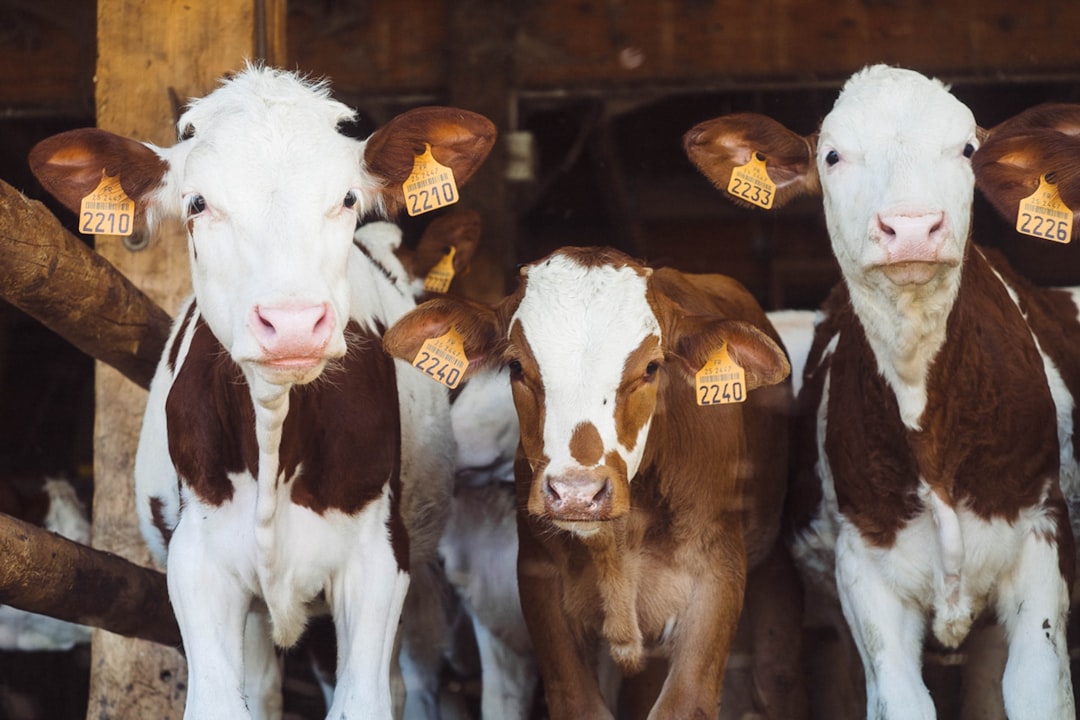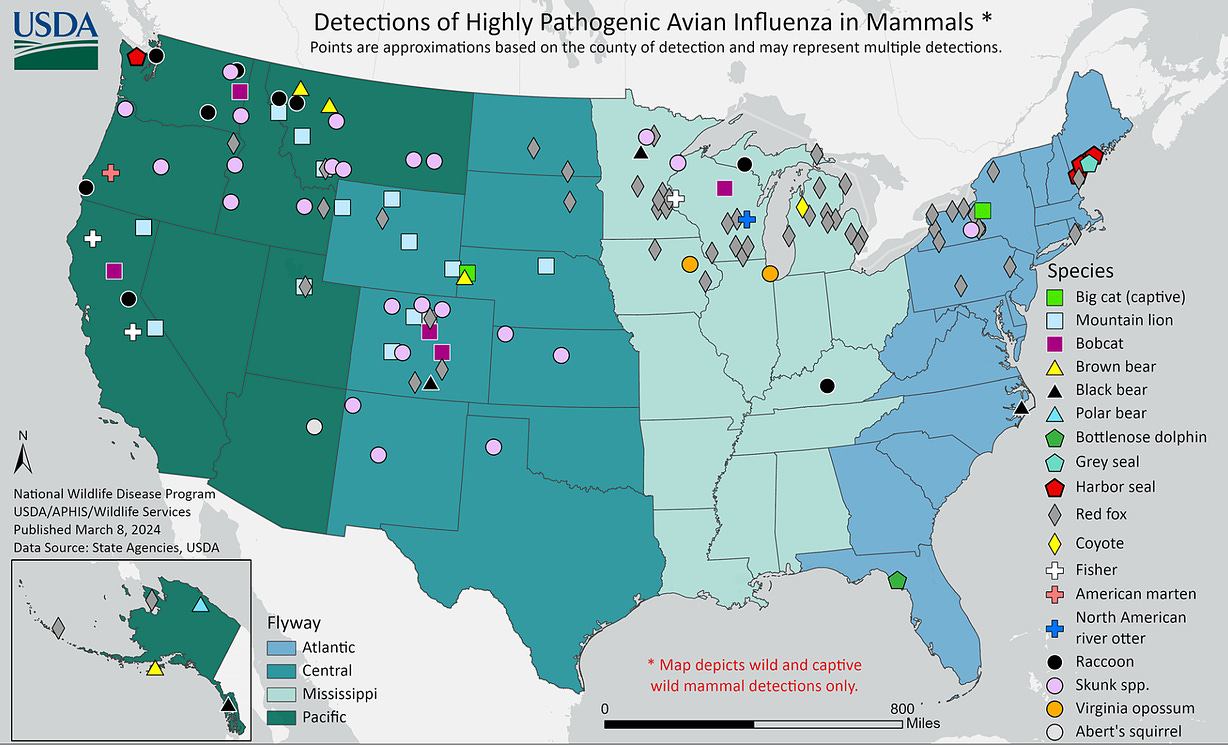Hits: 81
|
 |
Si quiere leer la versión en español, pulse aquí.
Avian flu: Birds, cows, and now a human
What do we know? What do we not know?
|
|
|
|||||||||||||||
There has been much in the news about dairy cows in Texas getting sick with avian influenza, and now a human is sick. Here is what we know, what we don’t know, and what this may (or may not) mean.
The avian flu timeline is accelerating
The version of bird flu, or avian flu, that is making the news has existed for over 20 years. We even have a name for it—highly pathogenic avian influenza virus A(H5N1), or HPAI for short. In birds, it’s highly contagious and deadly.
While it can infect humans (usually when a human has direct contact with a bird through, for example, hunting), the virus has never been able to spread efficiently among humans.
But the more this virus jumps from animal to animal or human, the more chance it has to mutate to infect humans. And things have been heating up lately:
- Birds experienced an infection lull from 2016 to 2022.
- Beginning in 2022, the U.S. experienced the largest and longest outbreak in U.S. history among birds, first among wild birds and then domesticated birds, like commercial chickens. These outbreaks caused eggs to be expensive and harder to find.
- Then, we started detecting avian flu in mammals worldwide—seals, bears, mountain lions, and foxes, just to name a few.
This brings us to today
Last week, officials announced that HPAI infections had been detected in cows on several dairy farms across five states. We then learned that cows in other states got sick once transported from the original farm, suggesting cow-to-cow transmission. This marks the first HPAI infection in cows in the United States.
 |
Photo by Annie Spratt on Unsplash
Yesterday, news was released that a person in Texas was infected with HPAI after working closely with the cows.
What we know
- Lab scientists analyzed the virus that infected the cows and found:
- It’s the same exact virus that is infecting birds, which suggests it jumped from bird to cow.
- We are very familiar with this virus. So much so that we know where it would need to mutate to spread better from human to human. Based on preliminary analysis, the virus has not mutated in a key spot, which is great news.
- The person infected had very mild symptoms—eye inflammation—and is on antiviral medication. This is good news, as the few cases of human HPAI on record have tended to be severe.
- A cow isn’t a pig, which is great news. Pigs are dangerous hosts for HPAI because they have avian and human receptors. They are known as “mixing vessels” for influenza viruses. As far as we know, this is not the case for cows.
- We have well-established flu vaccine pipelines and some stockpiled materials to make a matching human vaccine quickly, if necessary. We also have antivirals that can help prevent infection and severe illness.
What we do not know
Three main questions scientists are trying to answer:
- Did the virus mutate to become better adapted to cows? This will require more studies, which are already underway.
- Where else is it? Only a few farms are affected right now. However, viruses spread. The impact on milk supply and prices in the future is unclear.
- Is the virus able to transmit onward from here? It would not be surprising if there were more human cases in people who had direct contact with cows. What we don’t know is if the virus will be able to transmit onward to other humans. For example, in the latest case, we don’t know if any of the person’s contacts became infected. Epidemiologists will closely track this.
Is there any risk to me today?
At this point, the risk to the average person is close to nil unless you’re working with wild animals, birds, or cows.
While this virus impacts the milk supply of individual cows, milk in our grocery stores is still safe to drink. Milk from sick cows is not allowed to enter the commercial supply, and milk is pasteurized—a major safety step in which milk is heated to kill pathogens, including influenza viruses.
Raw milk is unlikely to be safe, and it’s definitely not recommended anyway due to other health risks.
Bottom line
Public health eyes have been on this HPAI sucker for decades, and avian flu is finding more mammals around us. This is unsettling, but scientists continue to pay close attention. In the meantime, it may be smart to implement lessons learned from the Covid-19 emergency quickly. The time to prepare is now.
Love, YLEs (Katelyn and Caitlin)

